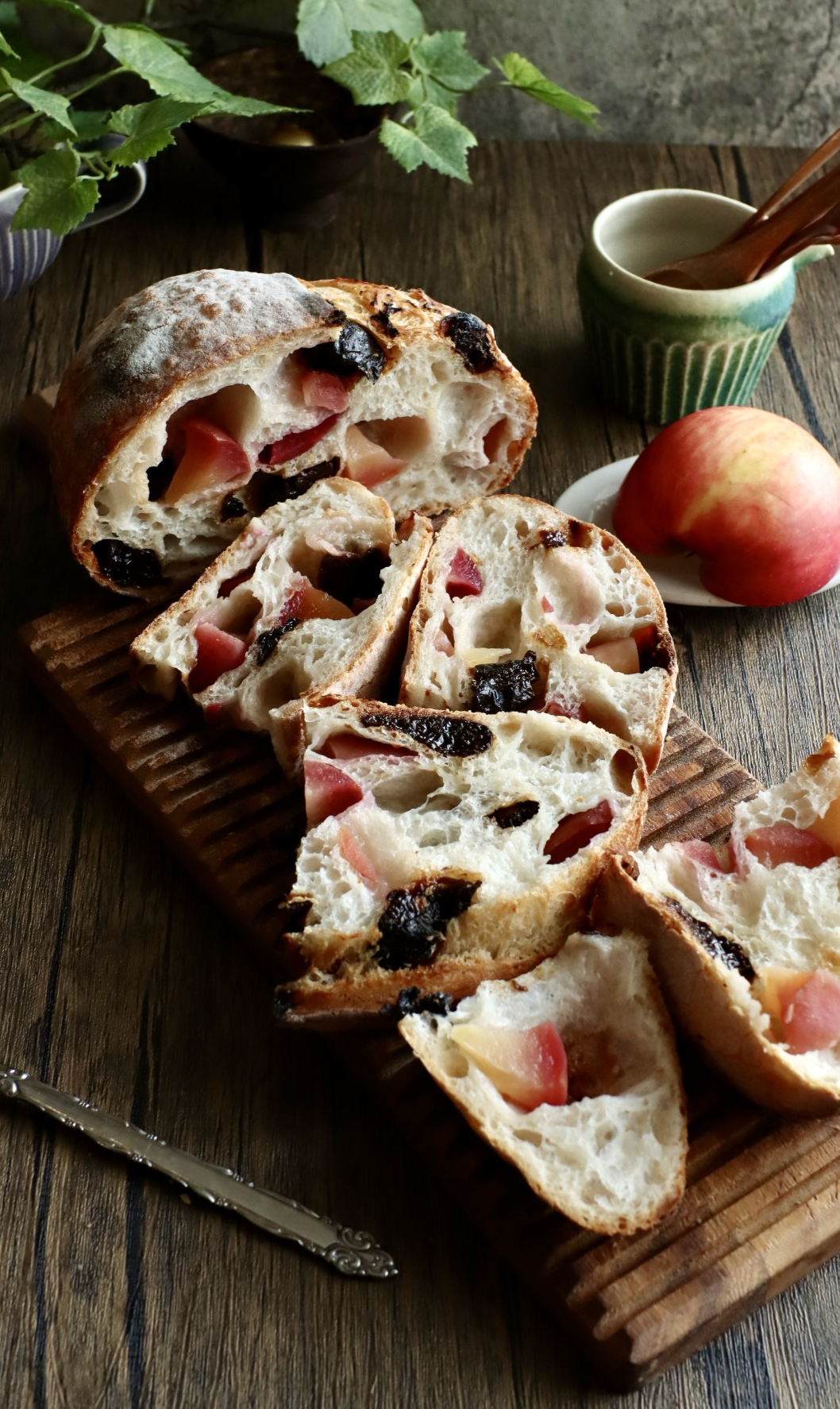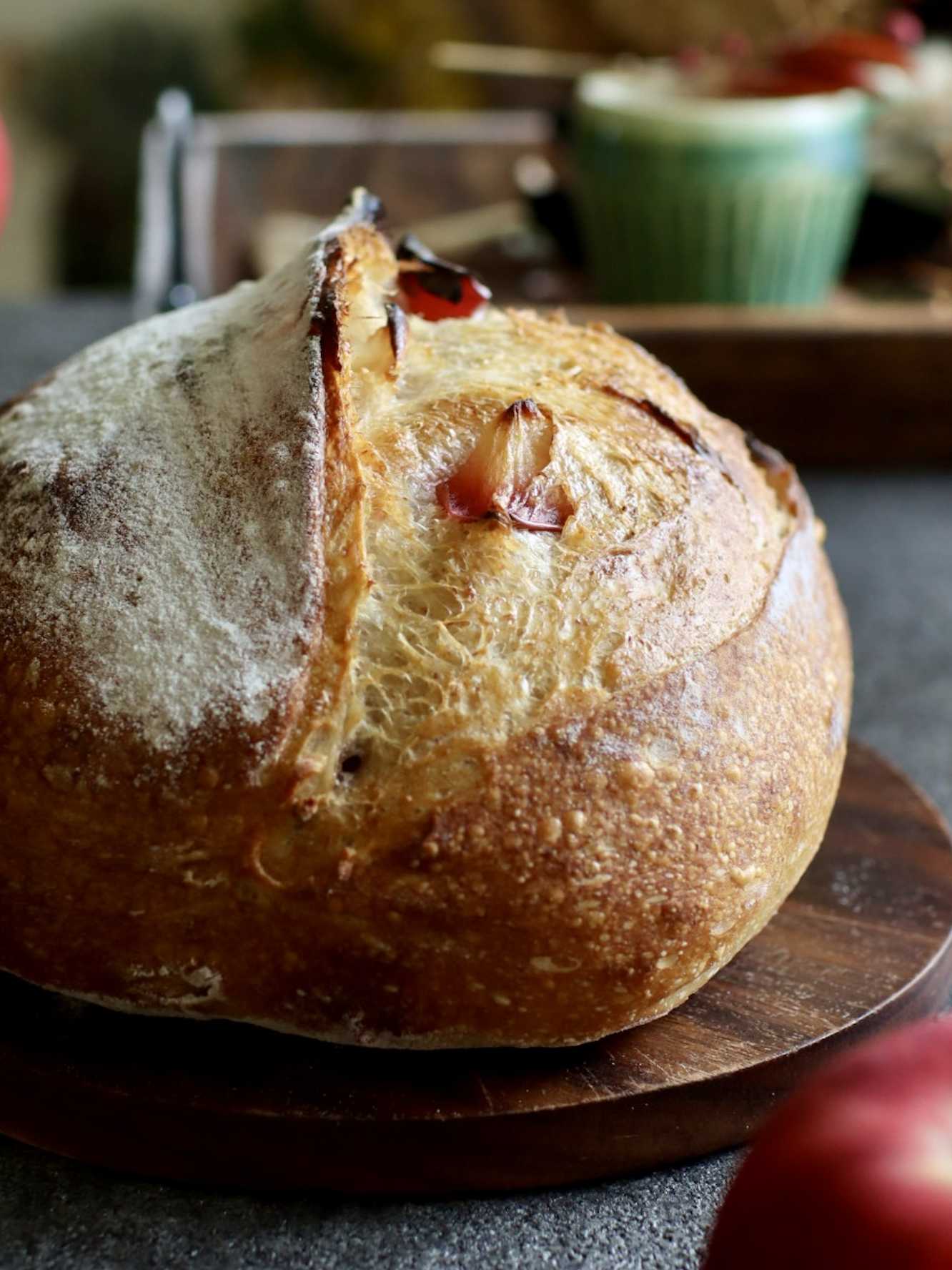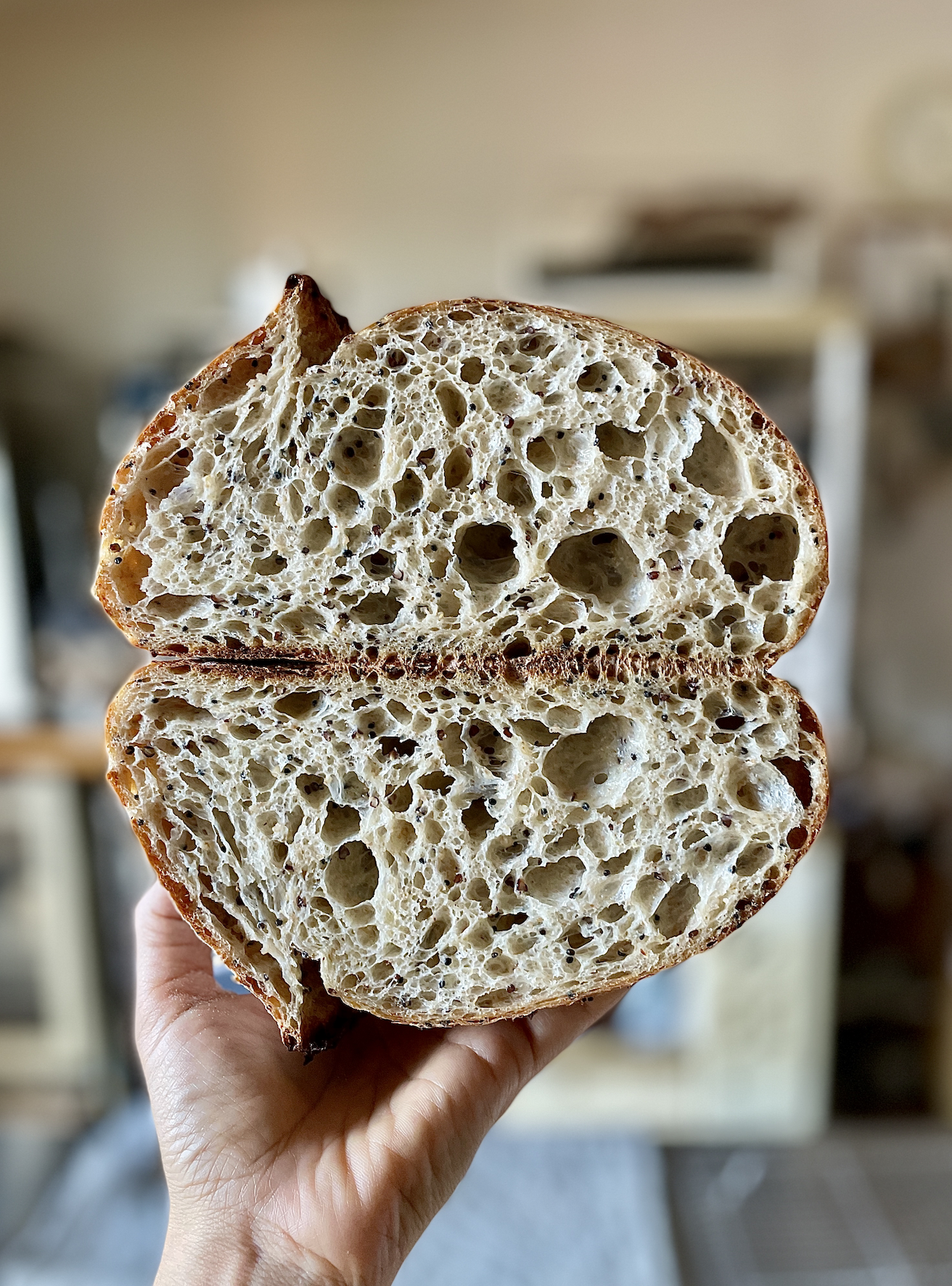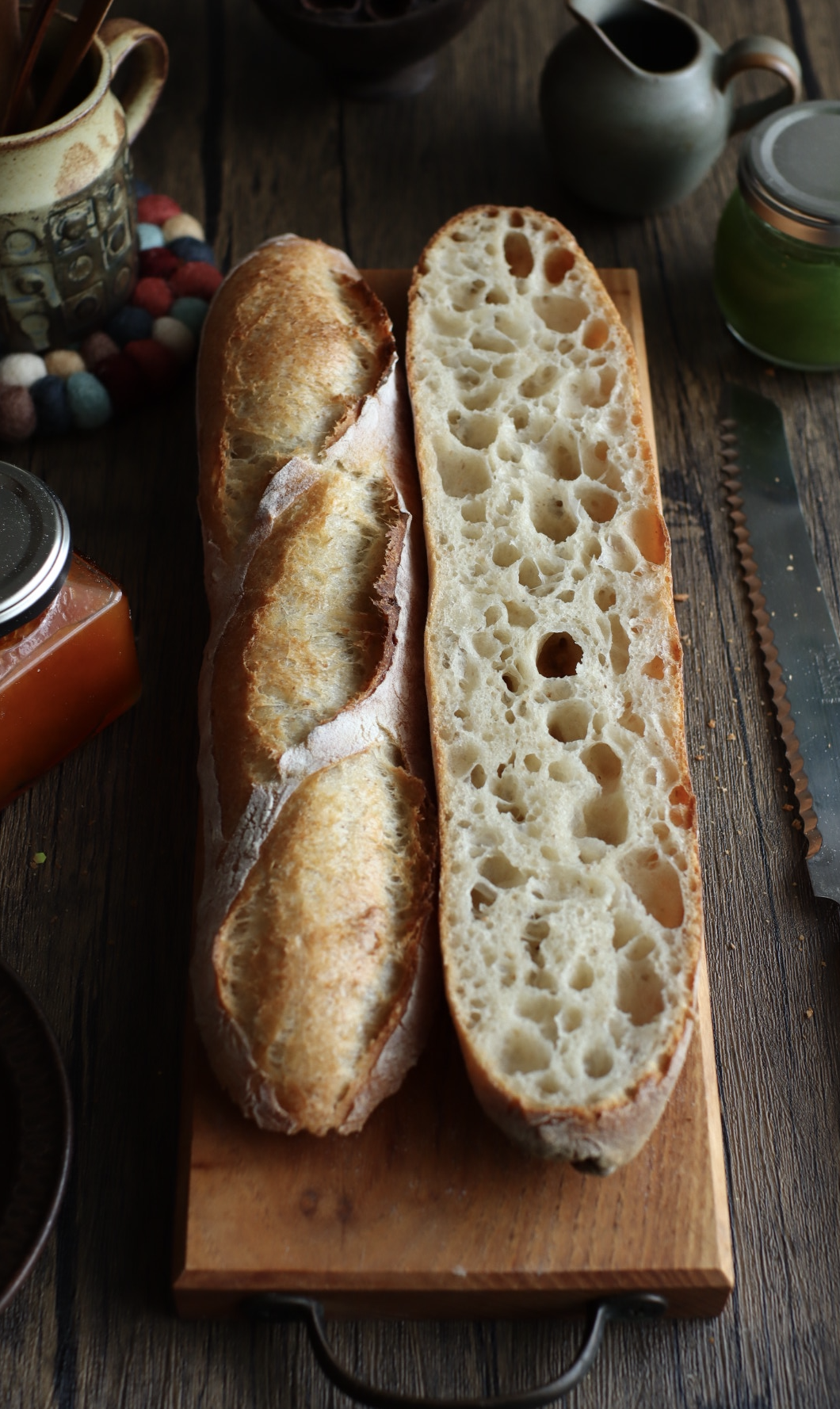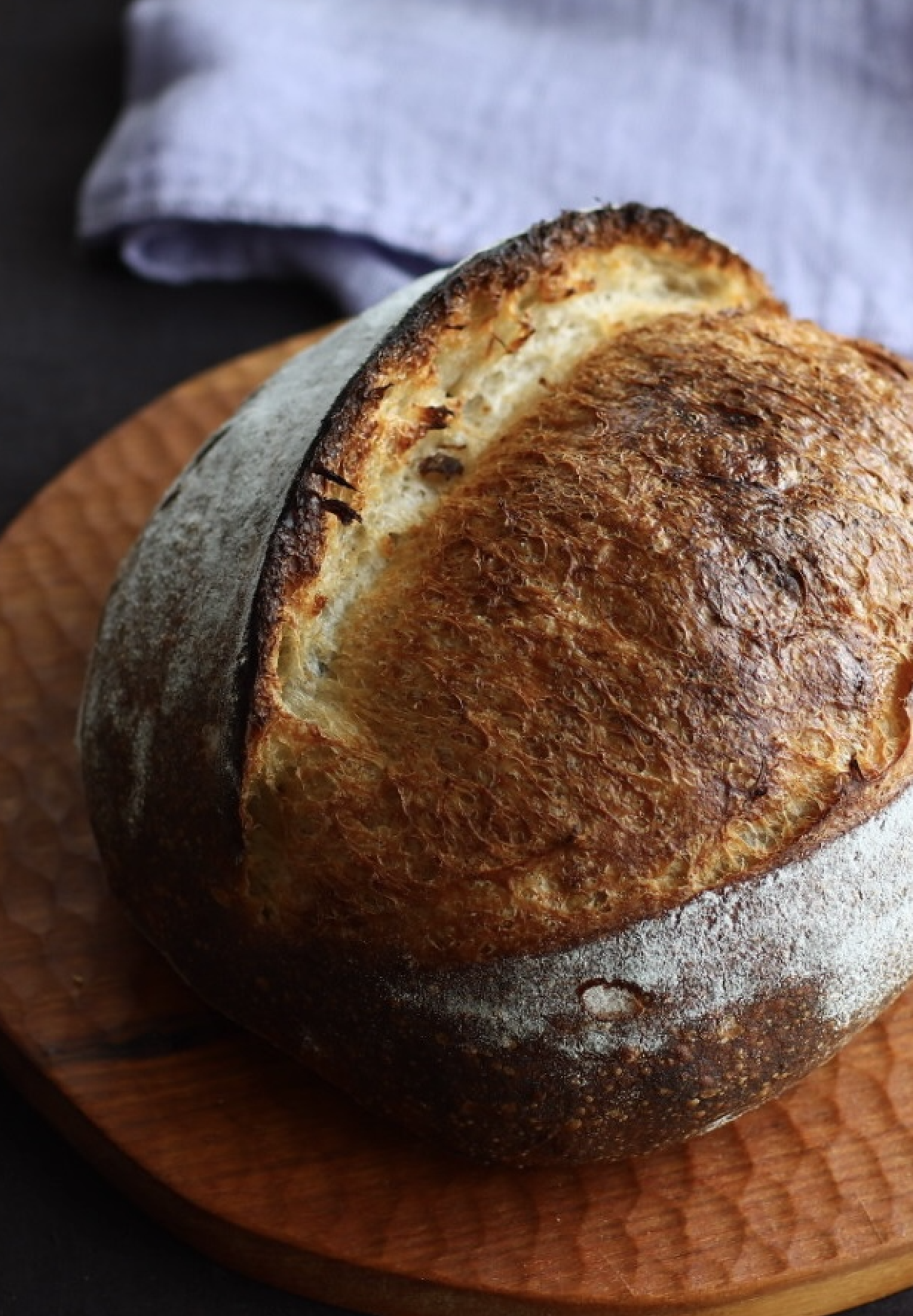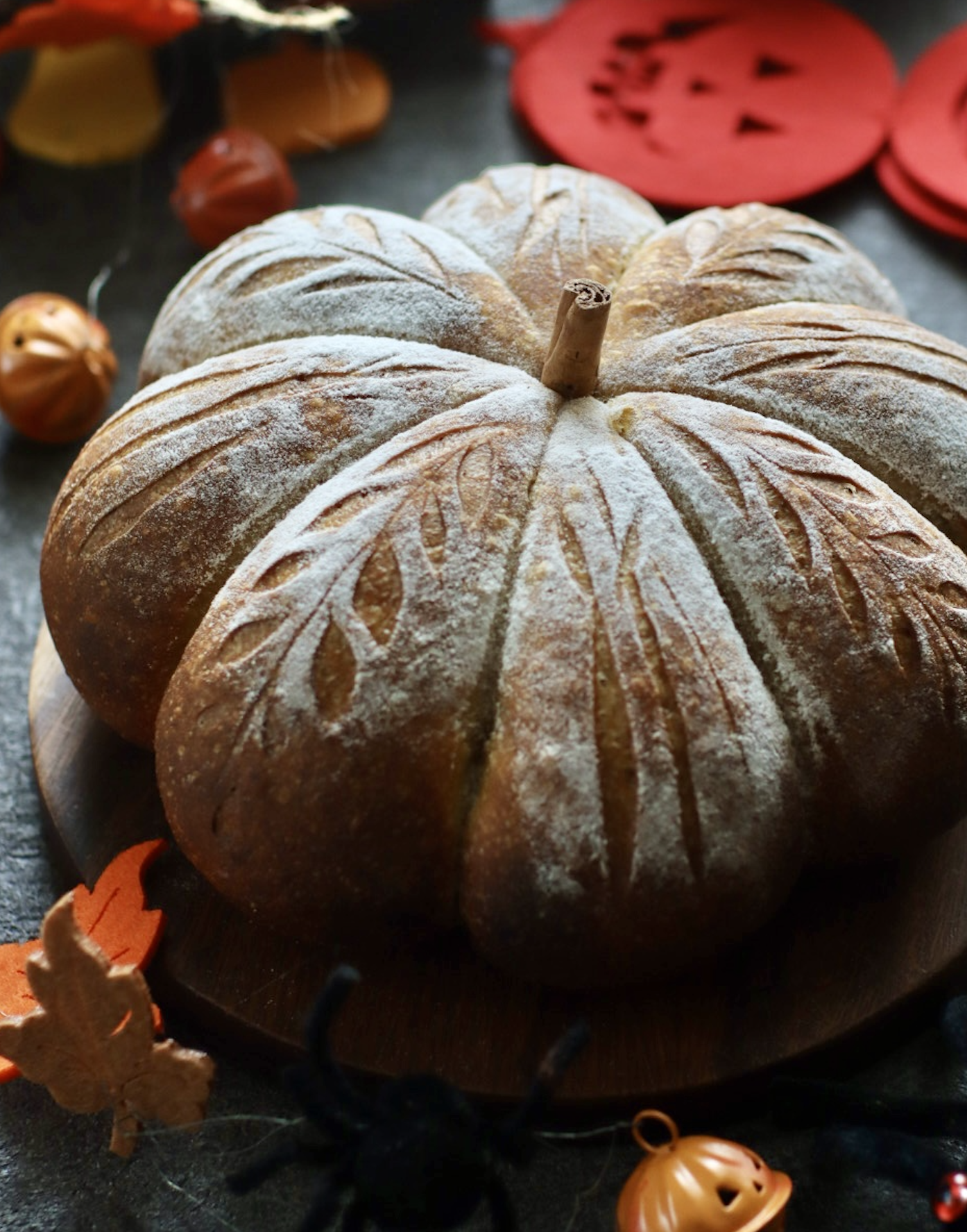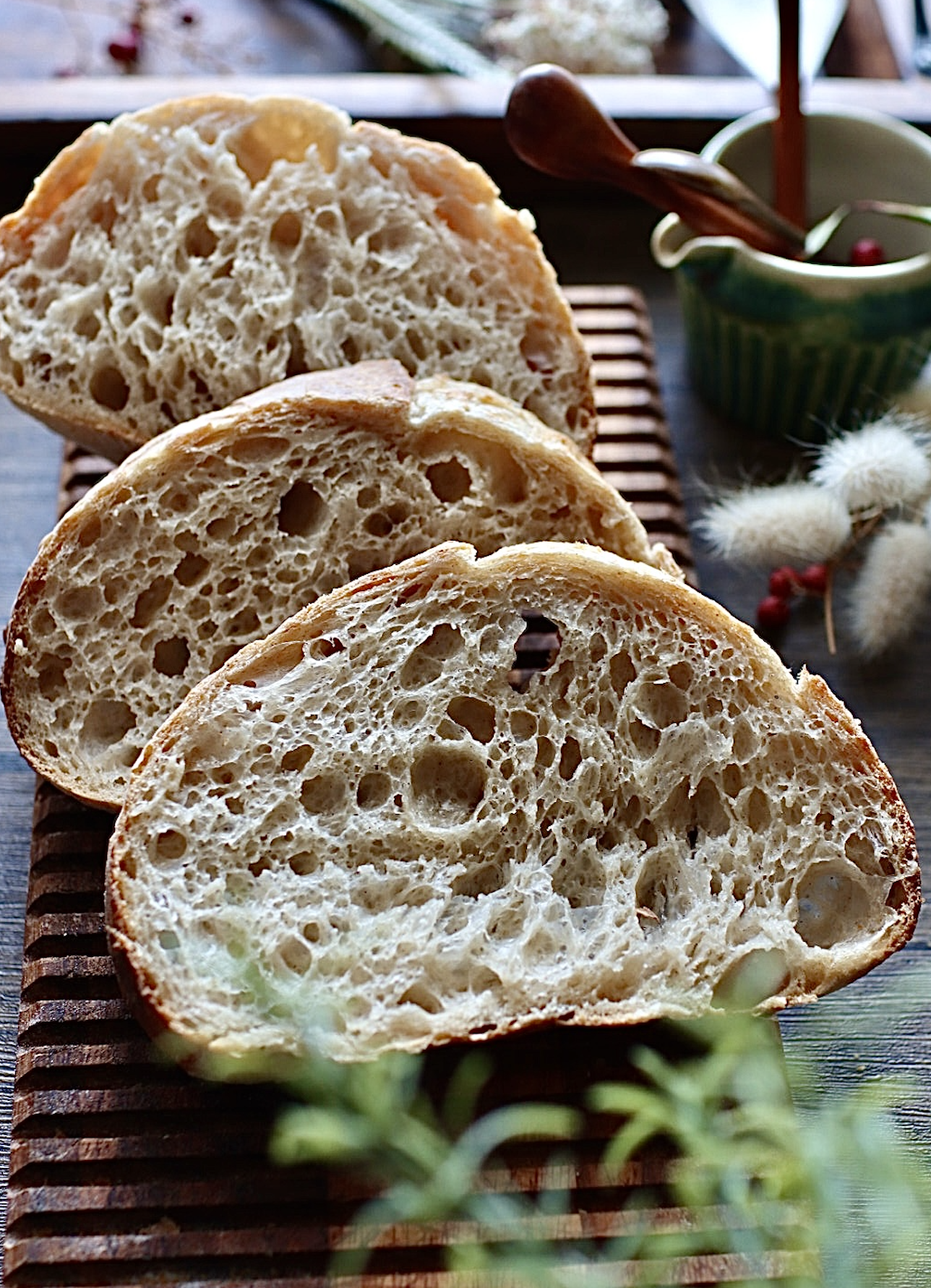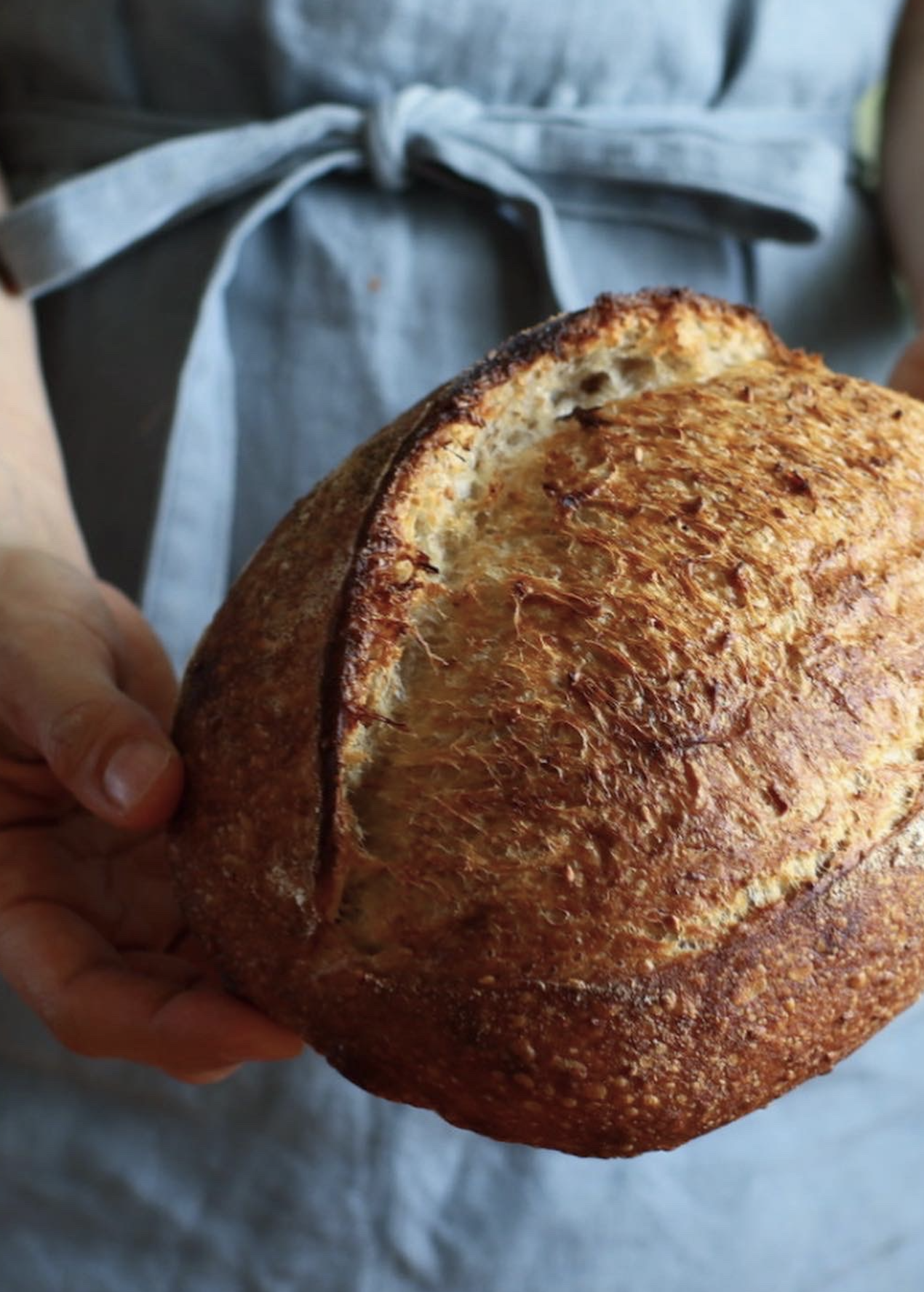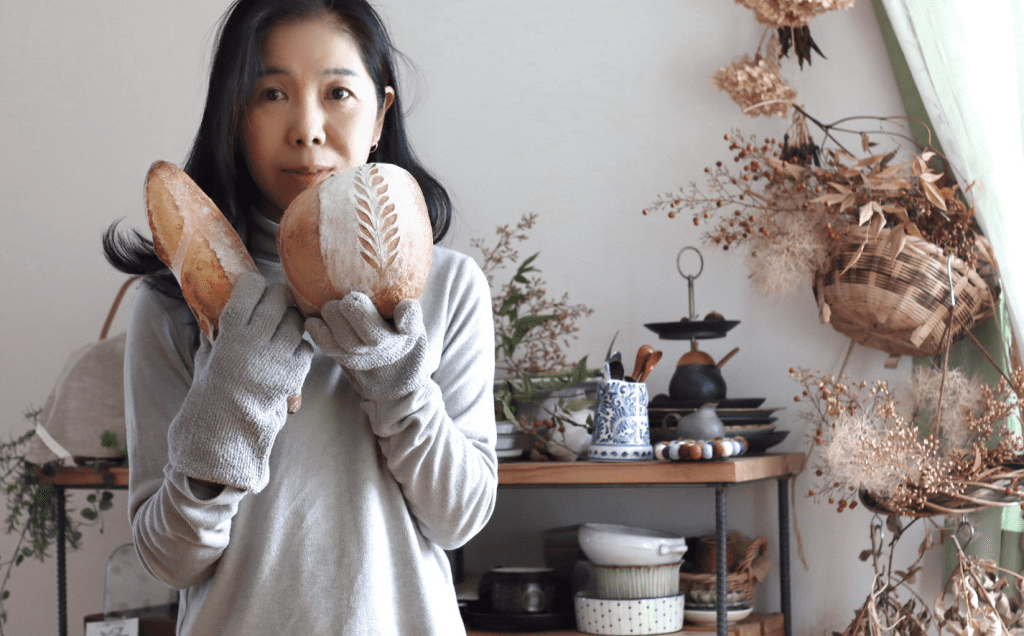森岡麻以さんに、ご自身のストーリーを共有してくださったこと、心より感謝申し上げます。日本の人々や文化への敬意と共に、私たちは日本におけるサワードウパン業界と家庭のベーカリーをサポートしたいと考えています。森岡さんのような情熱を持つベーカーの皆様と共に、サワードウパンの素晴らしい文化をさらに広げていけることを願っています。こちらをクリックして、日本語でのインタビューをお読みください。
Welcome to the latest feature on The Sourdough People, where we dive into the fascinating world of sourdough baking through the eyes of passionate bakers around the globe. Today, we’re thrilled to introduce Mai Morioka, a talented baker from Tsukuba City, Ibaraki Prefecture, Japan. Known on Instagram as @michoumama, Mai shares her unique journey into the art of sourdough baking, from her initial challenges to her innovative techniques that incorporate seasonal Japanese ingredients. In this interview, Mai discusses her approach to sourdough baking, the challenges of finding resources in Japan, her favorite tools and techniques, and how she engages with the sourdough community online. Join us as we explore Mai’s sourdough story, her insights into the benefits of sourdough baking, and her advice for newcomers to this fascinating craft.
Mai, please tell us where you are from and what you love about where you live?
I’m originally from Tokyo and currently live in Tsukuba City, Ibaraki Prefecture. Although it’s just about an hour from Tokyo, Ibaraki is known for its thriving agriculture, providing an abundance of seasonal vegetables and fruits.
What initially sparked your interest in sourdough baking, and how did you begin your journey?
I’ve been running confectionery classes for over 10 years. With the lockdown during the pandemic, I couldn’t conduct face-to-face lessons, so I began exploring the idea of making bread using a starter made from just flour and water. Discovering sourdough through Instagram and seeing people worldwide baking it got me hooked.
How has being based in Japan added to your sourdough journey?
Sourdough isn’t widely known in Japan, so finding Japanese resources has been a challenge. Nevertheless, I persistently experiment to create sourdough using domestically produced wheat. Considering the health-conscious nature of the Japanese, sourdough baking with only flour, water, and salt might become a trend.
How has your approach to sourdough baking evolved since you first started?
Initially, I faced difficulties cultivating a starter, but in 2021, when I tried again, it worked smoothly. I named the starter “Haru” (meaning “spring” in Japanese) since I’ve consistently maintained it with domestically produced wheat called “Haru yo Koi.” Haru is stable, providing mild acidity and excellent fermentation for baking.
Do you have a signature sourdough recipe or technique you’re particularly proud of? Can you share a bit about it?
I specialize in incorporating processed seasonal fruits into sourdough, like apple, chestnut, persimmon, sweet potato, and beans. My favorite is a batard with kneaded sweet potato, resulting in a soft, yellow, and fluffy bread.
Who are some of the people, brands, or companies in the sourdough industry that have inspired you?
Interacting with sourdough bakers on Instagram provides daily inspiration. The ability to share and see the fantastic sourdough creations globally is incredible.
What are your must-have tools or favorite equipment for sourdough baking, and why?
Key tools include the ANOVA oven with adjustable steam, a filling spatula, a refrigerated incubator, and a non-contact thermometer. The ANOVA oven minimizes uneven baking, and the spatula is hygienic and durable. The incubator helps maintain optimal temperatures for dough and starter, and the thermometer enhances precision.
How do you source your ingredients, and do you have any specific preferences or tips regarding flour, water, or salt?
I purchase most materials online, while local fruits and vegetables are readily available. Japanese flour companies offer a wide variety, and I enjoy experimenting with several types of domestic wheat, along with rye and whole wheat flour.
Can you share a particularly challenging experience you’ve had with sourdough baking and how you overcame it?
The first six months, particularly during the hot summer, were challenging, with temperature fluctuations affecting the sourdough. Adjusting the water content in the starter helped achieve stability. Managing a 1:0.8 ratio in the refrigerator and 1:1 for baking has proven successful.
What do you enjoy most about baking sourdough, and how does it impact your daily life?
Watching the bread bake in the oven and analyzing the results of various experiments are the most enjoyable aspects. Sourdough baking involves careful consideration of factors like proofing time, gluten development, and bulk fermentation, adding excitement to daily life.
How do you balance tradition and innovation in your sourdough baking practices?
With only three years of experience, my focus is on establishing my traditional Japanese sourdough bread. I aim to explore popular Japanese bread and innovative soft sourdough with Sweet Stiff Starter.
Have you noticed any new trends or innovations in sourdough baking recently?
Globalization of information is a significant trend, with home bakers sharing recipes and processes on social media and blogs. Visual content, such as videos and posts, allows exposure to various sourdough baking techniques, from beautiful open crumbs to the fascinating process of oven spring.
What are some common misconceptions about sourdough baking that you’ve encountered, and how do you address them?
Sourdough is often perceived as difficult or just producing sour bread. In a sense, this is correct; it’s not easy, and it does have some sourness. However, I view caring for the starter, creating a living dough with your hands, and enjoying the process as something more to be relished than considered difficult. While many Japanese people claim to dislike the sourness of sourdough (myself included), I believe that successful control can lead to extremely mild flavors, recognized for their pleasant taste. This is a message I’d like to convey in my future sourdough lessons.
In your opinion, what is the most underrated aspect of sourdough baking?
The health benefits of sourdough are often underestimated. Research on lactic acid bacteria has been progressing rapidly, and numerous health benefits of sourdough have been identified. I prefer it over white rice for breakfast, and I’ve experienced good digestive health and ease of digestion with sourdough bread.
Are there any books, videos, or online resources you’d recommend to those wanting to learn more about sourdough baking?
TARTINE and SOURDOUGH PANETTONE AND VIENNOISERIE are my favorite reads. They not only provide valuable insights into sourdough but also offer an opportunity to learn English. Understanding how lactic acid bacteria behave at each stage in making panettone, especially when using a levitomadre with a pH meter, was enlightening. Even if you fail, sourdough is endlessly fascinating.
What advice would you give to someone just starting with sourdough baking?
If starting with the sourdough starter, don’t rush until it stabilizes. Freshly created starters are often unstable and might not contribute much to your bread baking. Stick to the same flour initially, and repeat simple recipes and processes to identify reasons for any failures easily.
How do you engage with your followers and the sourdough community on social media? What’s your style?
While I haven’t joined sourdough communities, I interact with those baking homemade sourdough bread on a daily basis through comments and direct messages. Home bakers share their unique experiences and solutions, motivating each other through praising each other’s delightful bread.
Have you participated in any collaborations or community events related to sourdough baking, and what was your experience?
I haven’t participated in such events so far.
What’s your favorite sourdough recipe to bake for yourself, friends, or your loved ones?
I particularly enjoy incorporating seasonal ingredients. For example, one traditional Japanese New Year’s dish is called “osechi,” and it includes “kuro-mame” or sweet black beans. I prepare a lot of them, jar them, and use them in sourdough. Adding a small amount of roasted barley flour to the dough brings out a wonderful aroma that pairs perfectly with the black beans.
Do you have any tips or suggestions on how to manage a healthy sourdough starter culture?
I avoid accumulating too much acidity. A slightly firmer starter tends to have a milder transformation, but too much firmness makes it challenging to mix and burdensome. Therefore, I maintain a 1:0.8 ratio of flour to water and keep it in the refrigerator.
Do you have any upcoming projects or plans related to sourdough baking that you’re excited about?
I’ll soon start sourdough lessons in my home confectionery class. For someone like me, who has been baking just for myself, sharing the joy of sourdough baking with others is a new venture. While there are concerns, I look forward to the increased presence of sourdough-baking enthusiasts in my surroundings!
Can you describe a moment when you felt particularly proud or fulfilled in your sourdough baking journey?
It’s the ongoing process of trial and error that I’ve continued every day. When I was captivated by the open crumb and passionately involved in it, studying and practicing lactic acid bacteria, yeast, flour, gluten, hydration, temperature, and minerals, and exchanging thoughts with those who share similar interests, was a very fulfilling time.
If you could give one piece of advice to your past self when you started sourdough baking, what would it be?
Don’t start in the middle of summer!
Is there anything else Mai that you would like the community to know about you or things you would like the readers to potentially purchase or subscribe to?
Currently, I don’t have specific products or courses. I find encouragement in having many people visit and follow my posts on Instagram.
Closing Thoughts
Thank you for joining us in this enlightening conversation with Mai. Her journey and passion for sourdough baking remind us of the universal appeal of this ancient art and the innovative ways it can be adapted to reflect local cultures and ingredients. We hope you found inspiration in Mai’s story and perhaps some new ideas to try in your sourdough baking adventures.
If you enjoyed this interview, don’t forget to sign up for The Sourdough People’s email newsletter to stay updated on the latest stories, tips, and trends from the world of sourdough. Follow us on Instagram at @sourdoughbread.ca for more sourdough inspiration and behind-the-scenes looks into the lives of bakers like Mai. Lastly, we love hearing from our community! Use our intake form to send us interesting stories, products, or brands you think deserve a feature on our website.
Happy baking, and let’s keep the sourdough culture alive and thriving together!
